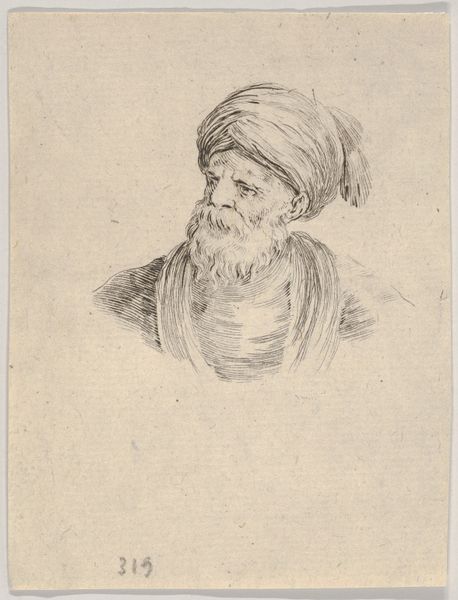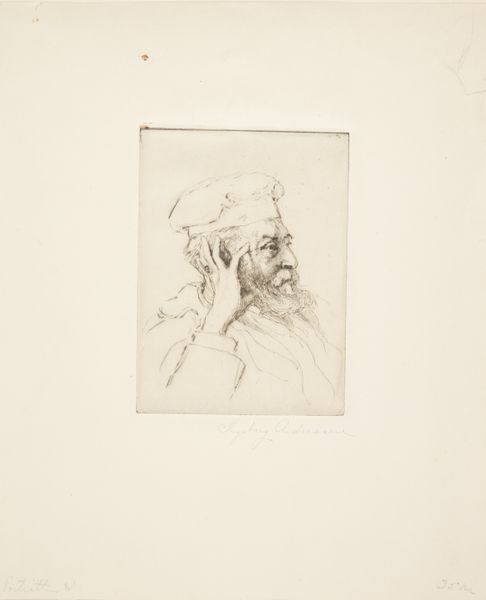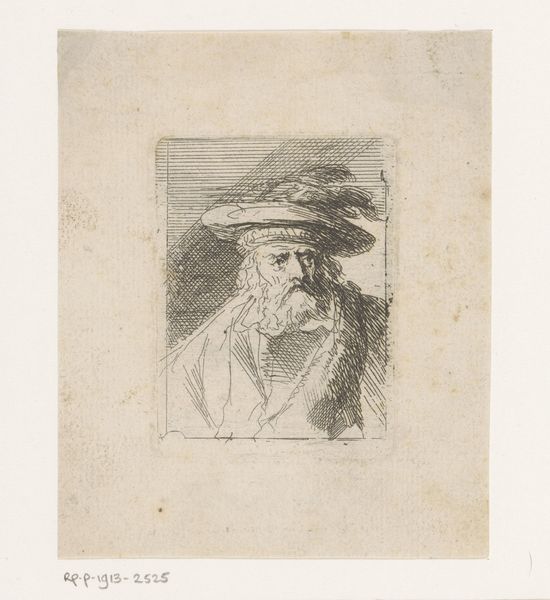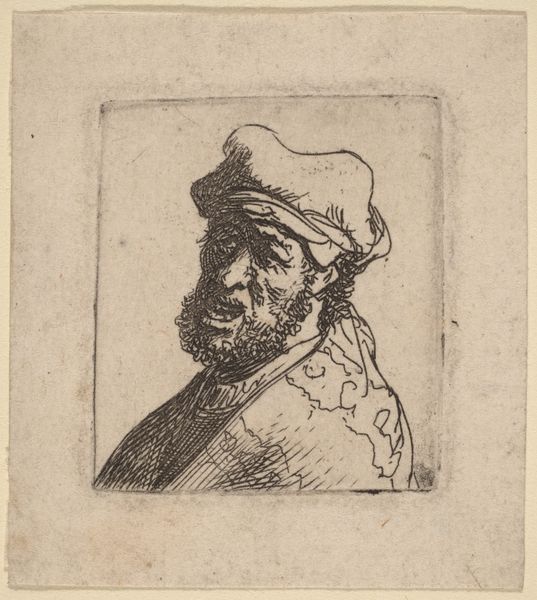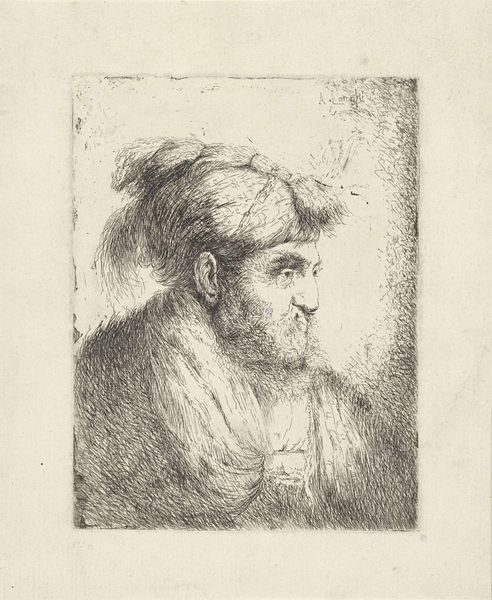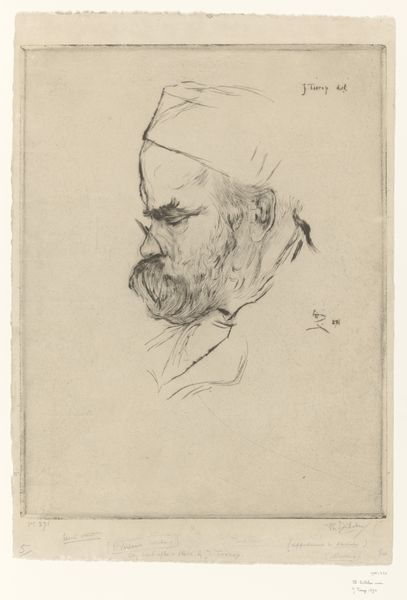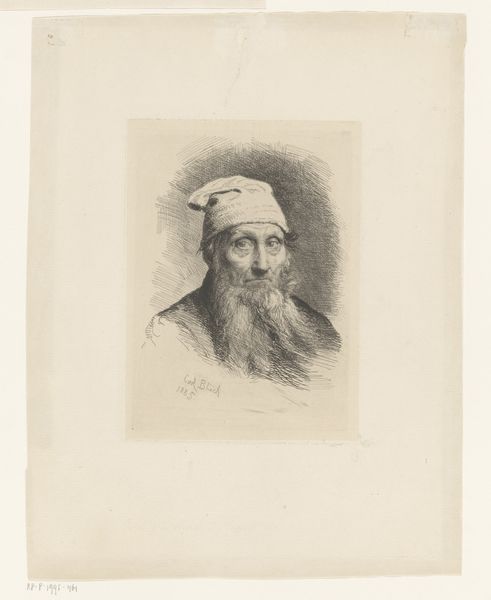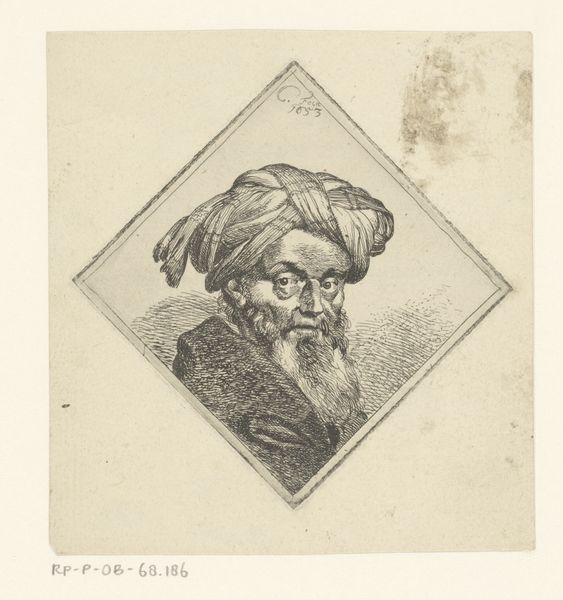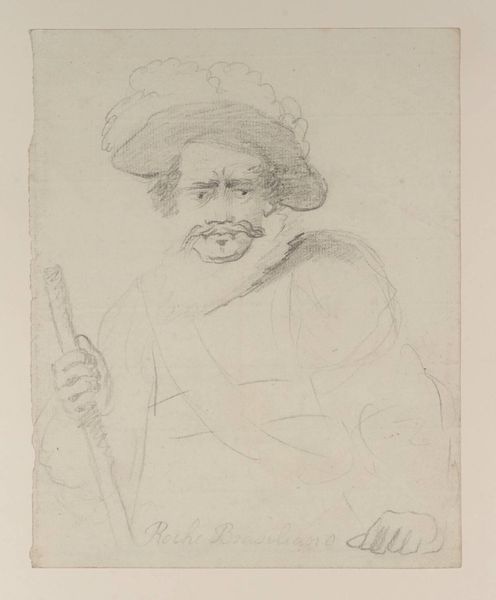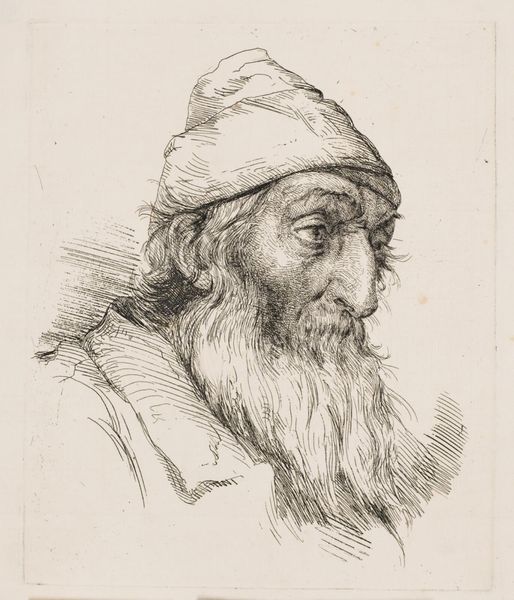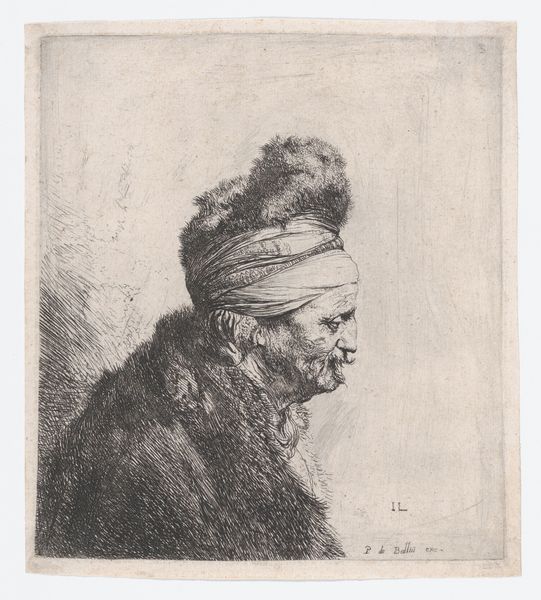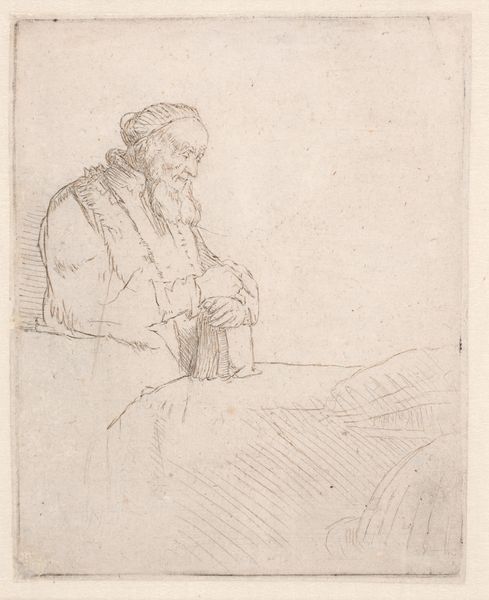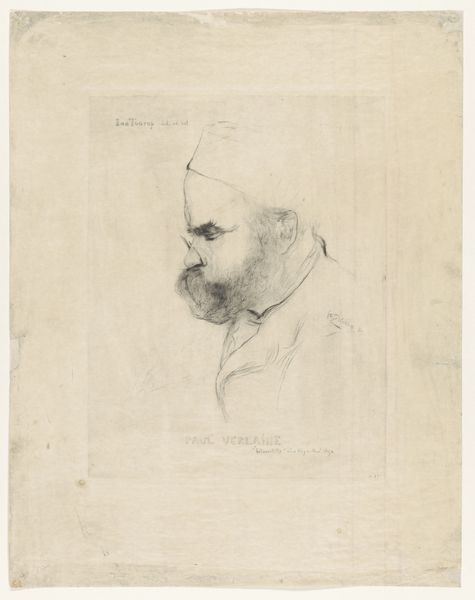
"The old rector" (portræt af Sigurd Müller) 1893 - 1931
0:00
0:00
drawing, print, etching, paper
#
portrait
#
drawing
# print
#
etching
#
paper
#
portrait drawing
Dimensions: 169 mm (height) x 123 mm (width) (plademål)
Editor: This is "The old rector," a portrait of Sigurd Müller by Ingeborg Andreasen-Lindborg, etched on paper sometime between 1893 and 1931. The figure seems to be lost in thought. How do you interpret this work within its historical context? Curator: The title “The Old Rector” positions this work within the historical and social context of academia and the Church, two pillars of society during the late 19th and early 20th centuries. Notice the etching technique itself: how does its prevalence during this period influence your understanding of its creation and intended audience? Editor: I see what you mean; the etching method would allow it to be widely produced, making it more accessible than, say, an original painting. Is it trying to convey something to the masses, then? Curator: Perhaps. Think about the power dynamics at play here. Andreasen-Lindborg, as an artist, chooses to depict Sigurd Müller. What statement might she be making about the societal role and perceived wisdom of such figures through the dissemination of his image? Consider also the quiet contemplation versus any explicitly stated messages: what does that ambiguity mean for the image's impact on the viewer? Editor: I hadn't thought about the power of image distribution like that! So, by creating this etching and making it accessible, she’s potentially reinforcing, or perhaps even questioning, Müller's authority and status. The thoughtful pose suggests an internal life beyond his public role. Curator: Precisely. And how might the reception of this image differ depending on the social and political climate in which it was viewed? Think about shifts in attitudes toward authority and tradition between the late 19th century and the early 20th. Editor: Wow, that really reframes my view of it. I came in thinking it was just a nice portrait, but now I see it's actively participating in a dialogue about power and representation. Curator: Indeed. By considering its historical and social dimensions, art transforms from a simple image into a rich source of cultural and political meaning.
Comments
No comments
Be the first to comment and join the conversation on the ultimate creative platform.
